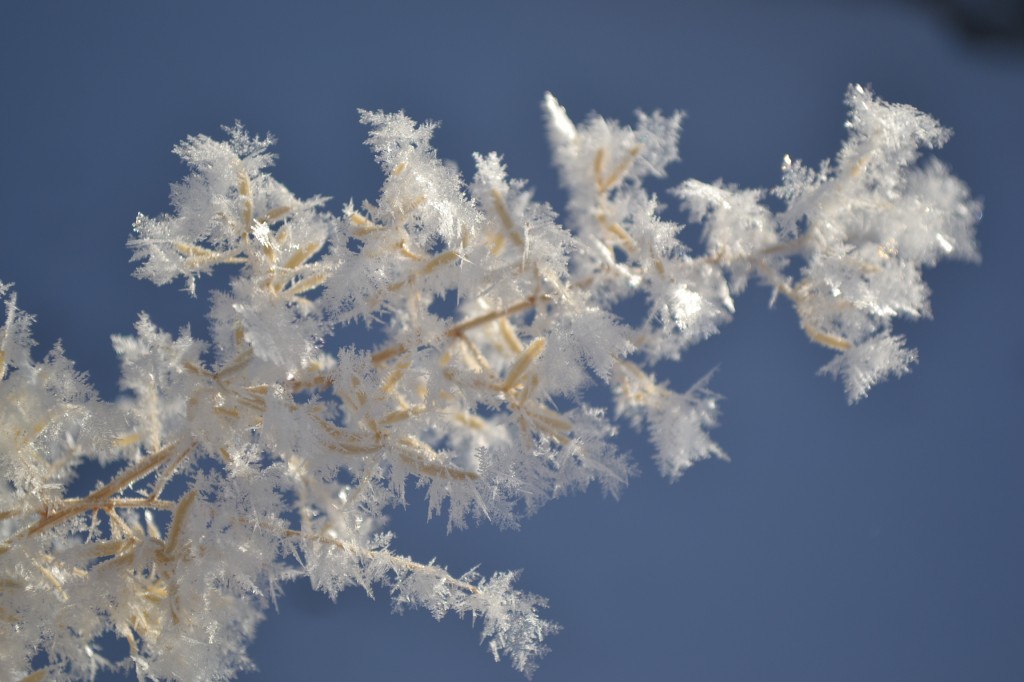Ice crystals can create one of the most beautiful winter displays. In eastern Iowa we usually see a couple spectacular formations each winter. Ice crystals are formed when water vapor freezes on cold surfaces. If the conditions are just right, you can see significant ice crystal forming on trees and shrubs. Winter ice crystals are similar to that of frost in the fall. Generally speaking, winter formations tend to be more full and extravagant. External conditions formed during the winter create the perfect breeding ground for these displays. Ice crystals form on pretty much every surface outside that is exposed to the elements.
Ice crystals on a weeping willow tree
Ice crystal up close
Ice crystals form overnight when the sun is down. You can usually get a few good hours out of the crystals before they start to fall off when the sun comes out. The uniqueness of this winter display definitely adds character and beauty to any landscape. As you can see by the photo of the weeping willow above, ice crystals are formed on every branch. The branches cascade and make for a showy winter scene. The crystals formed on these plants are delicate to the touch. If you bump up against the branches the crystals will fall off. Having a lack of winter wind helps keep the ice crystals in place.
Ice crystals are snow flakes that didn’t fall from the sky. Snow flakes are formed in the same technical way as ice crystals, but they just have a different way of appearing. Ice crystals actually grow on the on the object, where snow flakes form in the sky and land on the object. Only ice crystals can uniquely cling to branches like the photos above. To learn more about how snow flakes are formed, click here.


